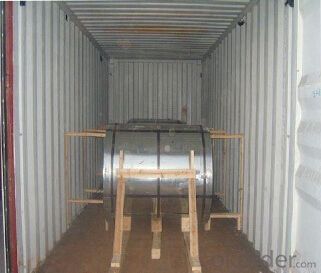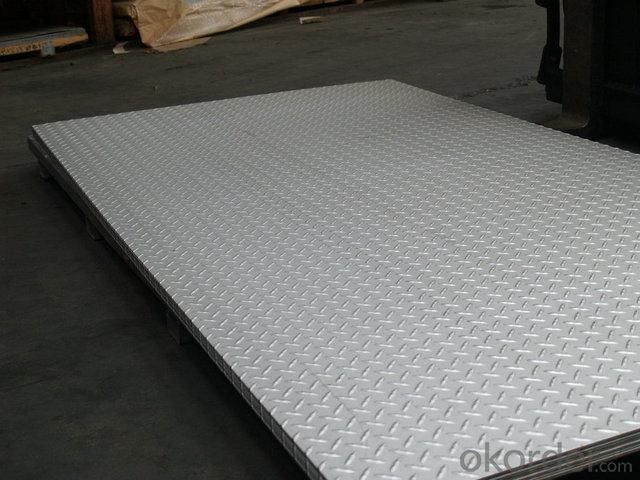Stainless Steel sheet with good polishing treatment
- Loading Port:
- Shanghai
- Payment Terms:
- TT OR LC
- Min Order Qty:
- 10000 m.t.
- Supply Capability:
- 5000000 m.t./month
OKorder Service Pledge
OKorder Financial Service
You Might Also Like
Hot sale stainless steel sheet 201/202/304/304l/316/316l/430 in china alibaba
Description of Stainless Steel Sheet:
Description | steel sheet,hot rolled steel sheet,cold rolled steel sheet, steel sheet,sheet,steel plate |
Standard | ASME, ASTM, EN ,BS,GB,DIN, JIS etc |
Application | Steel sheet applies to construction field, ships building industry, petroleum & chemical industries, war and electricity industries, food processing and medical industry, boiler heat exchanger, machinery and hardware fields. |
Packaging | Standard export sea-worthy packing |
Delivery time | 10-30 days |
Quality | No.1 |
Productivity | 500 tons/Day |
Note | Our company has cooperative relation between the domestic agents. Stainless steel sheet can be made accordingto the customers requirements. Fasten delivery. Quality assured. |
Contacts | If you have any question,please feel free contact me. |
Stainless steel sheet surface finish characteristics
Surface finish | Characteristics and application |
2B | The surface brightness and flatness of no2B is better than no2D. then through a special surface treatment to improve its mechanical properties,No2B could nearly satisfy comprehensive uses. |
No.1 | Polished with abrasive belt of grit#100-#200, have better brightness with discontinuous coarse stria, used as inner and external ornaments for building, electrical appliances and kitchen utensils etc. |
No.4 | Polished with abrasive belt of grit #150-#180,have better brightness with discontinuous coarse stria, but thinner than No3, are used as bathtub buildings inner and external ornaments electrical appliances kitchen utensils and food processing equipment etc. |
HL | Polished with abrasive belt of grit #150-#320 on the NO.4 finish and has continuous streaks, mainly used as buildings ornaments elevators, door of building, frontal plate etc. |
BA | Cold rolled, bright annealed and skin-passed, the product have excellent brightness and good reflexivity like mirror, kitchen apparatus, ornament etc. |
8K | The product have excellent brightness and prefer reflexivity can to be the mirror. |
Main Features of stainless steel sheet :
•Escalator, Elevator, Doors
•Furniture
•Production tools, Kitchen appliances, freezers, cold rooms
•Auto Parts
•Machinery and Packaging
•Equipment and Medical devices
•Transport system
Product Details:



Sandard Seaworth Packing(wooden packing with water proof paper)


FAQ:
1. What's the quality?
very fine
2. How long get reply?
within 24 hours
If you have any question about stainless steel sheets,donot forget to sending the email to Us! You will get the competitive Price and have a very good experience about the Buying Process! CNBM International Corporation is always your trustful friend!
- Q: Can stainless steel sheets be used for decorative purposes?
- Certainly, decorative purposes can be served by stainless steel sheets. Renowned for its sleek and contemporary look, stainless steel is a widely preferred option for diverse decorative uses. Its applications span across interior design, architecture, and even art installations. Stainless steel sheets can be personalized to fashion distinctive patterns, textures, and finishes, rendering them ideal for crafting captivating and visually enticing decorative elements. Moreover, stainless steel boasts exceptional durability, corrosion resistance, and simple maintenance, making it a pragmatic choice for both indoor and outdoor decorative applications.
- Q: What are the benefits of using etched stainless steel sheets in signage?
- There are several benefits of using etched stainless steel sheets in signage. Firstly, stainless steel is highly durable and resistant to corrosion, making it suitable for outdoor applications and ensuring longevity. Secondly, the etching process allows for intricate and detailed designs, resulting in visually appealing signage. Additionally, stainless steel is easy to clean and maintain, ensuring that the signage remains in good condition. Finally, stainless steel has a professional and modern look, adding a touch of sophistication to any signage project.
- Q: Are stainless steel sheets resistant to chemicals and acids?
- Yes, stainless steel sheets are resistant to chemicals and acids. Stainless steel contains a high percentage of chromium, which forms a protective layer on the surface of the metal, making it highly resistant to corrosion and damage from chemicals and acids. This corrosion-resistant property is further enhanced by the addition of other elements such as nickel and molybdenum. Stainless steel sheets are widely used in various industries, including chemical processing, pharmaceuticals, food and beverage, and automotive, where they are exposed to aggressive chemicals and acids. The resistance of stainless steel to chemicals and acids makes it a reliable and durable material for applications that require resistance to corrosion and chemical attack.
- Q: What are the benefits of using brushed stainless steel sheets?
- There are several benefits of using brushed stainless steel sheets. Firstly, they have a visually appealing brushed finish that adds a modern and sophisticated touch to any space. Secondly, brushed stainless steel is highly durable and resistant to corrosion, making it suitable for various applications, including kitchen appliances, architectural elements, and automotive parts. Additionally, these sheets are easy to clean and maintain, as the brushed finish helps to hide fingerprints and smudges. Lastly, brushed stainless steel sheets are versatile and can be easily formed into different shapes, allowing for creative and customized designs.
- Q: What are the common uses of stainless steel sheets?
- Stainless steel sheets have a wide range of common uses due to their durability, corrosion resistance, and aesthetic appeal. Some of the most common applications of stainless steel sheets include kitchen appliances, automotive components, industrial equipment, construction materials, and decorative purposes.
- Q: What industries commonly use stainless steel sheets?
- Several industries commonly use stainless steel sheets, including automotive, construction, food and beverage, aerospace, pharmaceutical, and chemical industries. Stainless steel sheets are valued for their durability, corrosion resistance, and versatility, making them suitable for a wide range of applications in these industries.
- Q: Can stainless steel sheets be etched with designs?
- Yes, stainless steel sheets can be etched with designs.
- Q: Can stainless steel sheets be used for architectural façades?
- Architectural façades can indeed incorporate stainless steel sheets. With their durability and versatility, stainless steel proves to be an advantageous material for such applications. Its resistance to corrosion, weathering, and staining makes it perfect for outdoor use. Moreover, stainless steel sheets can be manipulated into various shapes and sizes, allowing for a wide array of design possibilities. Furthermore, stainless steel can be finished in diverse ways, including brushing, polishing, or coloring, which adds further aesthetic options. Its strength and rigidity also make it suitable for large installations. All in all, stainless steel sheets offer durability, aesthetic appeal, and design flexibility, making them a highly sought-after choice for architectural façades.
- Q: Are stainless steel sheets resistant to saltwater corrosion?
- Stainless steel sheets possess a high level of resistance against corrosion caused by saltwater. The exceptional corrosion resistance of stainless steel is widely recognized, rendering it an ideal material for use in environments exposed to saltwater. The presence of chromium in stainless steel results in the formation of a protective oxide layer on the surface, effectively acting as a barrier against corrosion. This oxide layer serves to shield the steel from direct contact with saltwater, thus minimizing the risk of corrosion. Moreover, stainless steel grades such as 316 and 316L are specifically engineered to provide enhanced resistance against saltwater corrosion, further increasing their suitability for marine applications. In conclusion, the outstanding corrosion resistance properties of stainless steel sheets make them a dependable option for saltwater environments.
- Q: Are stainless steel sheets suitable for high-temperature applications?
- Yes, stainless steel sheets are suitable for high-temperature applications. They have excellent heat resistance properties and can withstand elevated temperatures without losing their strength or structural integrity.
Send your message to us
Stainless Steel sheet with good polishing treatment
- Loading Port:
- Shanghai
- Payment Terms:
- TT OR LC
- Min Order Qty:
- 10000 m.t.
- Supply Capability:
- 5000000 m.t./month
OKorder Service Pledge
OKorder Financial Service
Similar products
Hot products
Hot Searches
Related keywords





























